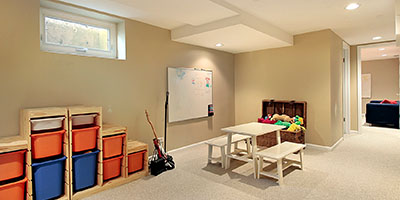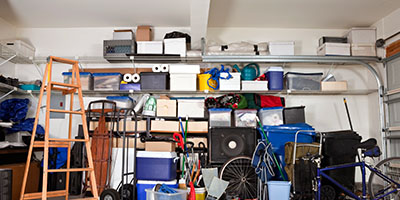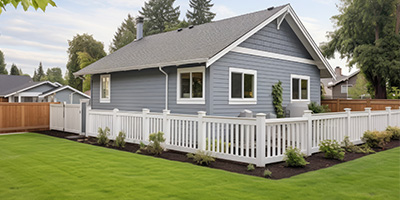How to Build a Mudroom You and Your Family Will Love

How to Build a Mudroom
Entryways often become catch-all areas for shoes, umbrellas and outerwear. It’s also the first room guests encounter when they pay you a visit. Tired of tripping over clutter when you walk through the door? A mudroom may be the solution you’re looking for. Learn how to build a mudroom and clear away clutter with these helpful tips.
What is a Mudroom?
A mudroom can be as simple as a floor mat and coat rack near the main entrance of your home, but it can be so much more. There are countless ways to utilize storage space in a small mudroom, like installing cubbies, shoe racks or cabinets.
It’s important to carefully choose design and storage elements that fit the needs of your household. Consider factors such as:
- The number of people in your home
- Common family activities
- The amount of space available
- Accommodations for pets
Once you’re clear on your needs, it’s time to get started.

“A mudroom is the ideal place to store high use ‘coming and going’ items. Shoes, jackets, and backpacks, of course, but also sunscreen, sidewalk chalk, umbrellas, sunglasses, reusable tote bags, etc. Anything you would need to grab as you are heading out the door. It is also a great place to keep a ‘fun on the run’ kit, which is a small collection of activities like crayons, coloring books, matchbox cars, and other small toys that you can use to keep your young children entertained while they are at a restaurant or waiting at the doctor’s office.”
Sara Nelson, Owner, Less is More Organizing Services
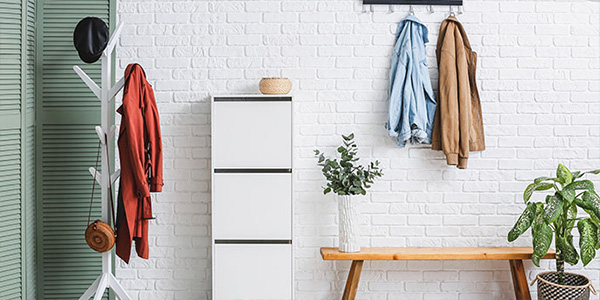
How to Build a Mudroom
1. Choose and Prepare a Space
Mudrooms are flexible spaces and can fit into most entrances, but location is still a crucial factor to consider during the planning phase. Several existing spaces can be converted into a mudrooms, including your:
- Laundry room
- Front hallway
- Backdoor area
- Garage entryway
Having five feet of width is ideal, as it allows you to install DIY mudroom cabinets or rows of cubbies with ease. If you only have four feet of width, you still have room for shallow cabinets, coat racks and wall-mounted shelves.
Need to Remove a Wall?
Looking to install a sliding door closet or recessed wall cabinet? You might need to tear down a wall. This type of renovation requires a lot of time, effort and planning. Before you tackle this project, make sure the wall in question isn’t structural or load-bearing.
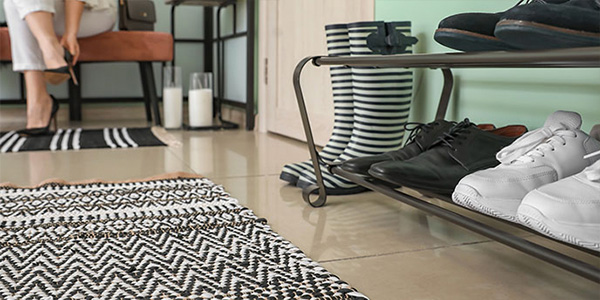
2. Build a Shoe Bench
No matter where your mudroom is located or what shape it takes, installing a shoe bench is a simple mudroom storage option. It makes it easier to set down your purse, take off your shoes and remove clunky outerwear before entering your home.
You can purchase a mudroom bench at most home good stores, but building your own is also an option. It’s a fairly simple DIY project too, as you only need a wooden box, paint and padded lining. Looking to cut costs even further? Use reclaimed or recycled wood. If you’re working on a tight budget but aren’t particularly handy, shop Craigslist or Facebook Marketplace.
When you install the shoe bench, nail or glue it to the wall to ensure it stays in place. Depending on the type of flooring your mudroom has, you might need to remove tiles or baseboards so the mudroom bench can sit flush with the wall.
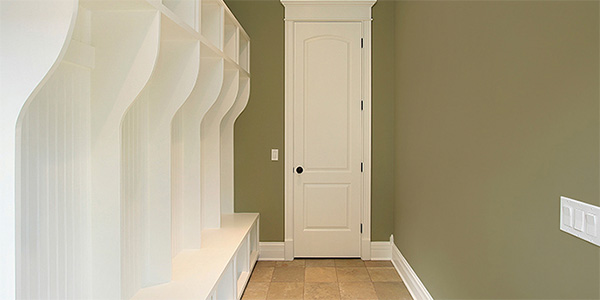
3. Install Personal Cubbies
If you have little ones, personalized storage cubbies are a great way to keep your belongings organized separately. As you build your mudroom, make sure the shelves and hooks in each cubby are within reach for the person using it. Since cubbies are usually mounted against a wall, consider building a new dividing wall if you don’t want an open-concept mudroom.

“Tie the contents of your mudroom to the present season. With the seasons changing every few months, expect that the items kept in the mudroom will always be in flux. Since this area is prime real estate, be very selective with what you store there. If space is limited, only keep items in this area that are seasonally appropriate and that you use daily or a few times a week. If you have ample storage, rotate seasonal items so that winter gear is easily accessible during the cooler months, and summer gear is stored in higher cabinets or shelves. Switch places when warmer weather begins.”
Sara Nelson, Owner, Less is More Organizing Services
4. Leave Room for Floor Mats
You can’t spell “mudroom” without “mud.” If your mudroom is at the entrance of your home, expect dirt, mud, grease and other messes from people coming and going. While a simple rug helps keep things clean, rubberized and weatherproofed rugs are especially effective. Plus, you can easily rinse them off in your bath tub or with a garden hose.
Mudroom Ideas for Small Spaces
When it comes down to it, you might not have enough room for your favorite mudroom design ideas. If you’re working in a smaller area, get creative with your storage space to make an open, welcoming entryway. To start, think about the overall purpose of your mudroom. Do you need a place to hang your rain jacket and umbrella? Or do you need somewhere to keep your kids’ sports equipment and dog-walking gear? Knowing what you need from your mudroom will simplify the planning process.
You can also save floor space and increase mudroom storage by installing cabinets. This way, everyone in your home will have somewhere to keep their belongings without cluttering the hall closet. We suggest assigning a rack to each of your family members to make things even more organized.

“Think vertically. Place shelves or hooks as high as can be comfortably reached. Keep items in labeled bins. Put items away once you come home.”
Sara Nelson, Owner, Less is More Organizing Services
Not sure what to expect with a dumpster rental? Check out our Dumpster Rental 101 tips.

